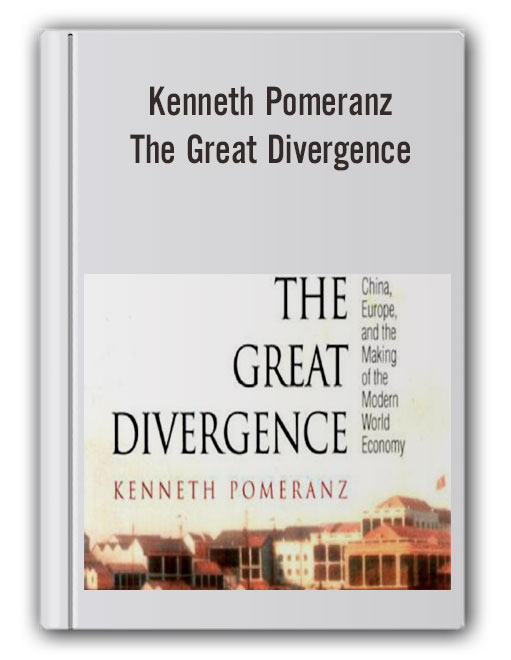Kenneth Pomeranz – The Great Divergence
Only registered users can download.
Please LOGIN/REGISTER
Author: Kenneth Pomeranz
“Ken is a global historian of the first water,” said Paul Cheney, Professor of European History and the College at the University of Chicago. “He not only makes comparisons between distant regions of the globe, he sustains them over several centuries. This is what makes The Great Divergence such a tour de force.”
The Great Divergence
Sale Page : Kenneth Pomeranz
This product is available
The Great Divergence brings new insight to one of the classic questions of history:
Why did sustained industrial growth begin in Northwest Europe, despite surprising similarities between advanced areas of Europe and East Asia? As Ken Pomeranz shows, as recently as 1750, parallels between these two parts of the world were very high in life expectancy, consumption, product and factor markets, and the strategies of households.
Perhaps most surprisingly, Pomeranz demonstrates that the Chinese and Japanese cores were no worse off ecologically than Western Europe.
Pomeranz argues that Europe’s nineteenth-century divergence from the Old World owes much to the fortunate location of coal, which substituted for timber. This made Europe’s failure to use its land intensively much less of a problem, while allowing growth in energy-intensive industries. Another crucial difference that he notes has to do with trade. Fortuitous global conjunctures made the Americas a greater source of needed primary products for Europe than any Asian periphery. This allowed Northwest Europe to grow dramatically in population, specialize further in manufactures, and remove labor from the land, using increased imports rather than maximizing yields. Together, coal and the New World allowed Europe to grow along resource-intensive, labor-saving paths.
Meanwhile, Asia hit a cul-de-sac. Although the East Asian hinterlands boomed after 1750, both in population and in manufacturing, this growth prevented these peripheral regions from exporting vital resources to the cloth-producing Yangzi Delta. As a result, growth in the core of East Asia’s economy essentially stopped, and what growth did exist was forced along labor-intensive, resource-saving paths–paths Europe could have been forced down, too, had it not been for favorable resource stocks from underground and overseas.
Reviews:
“This book makes, bar none, the biggest and most important contribution to our new understanding of the causes and mechanisms that brought about the great divergence’ between the West and the rest of China in particular. . . . An entirely new and refreshing departure. Although he makes new comparisons between Europe, China, Japan, India, Southeast Asia, Pomeranz also connects all these and more in a bold new sweep that should immediately make all previous and most contemporary related work obsolescent.”–Andre Gunde Frank, Journal of Asian Studies
Be the first to review “Kenneth Pomeranz – The Great Divergence” Cancel reply
You must be logged in to post a review.
Related products
Free Download
Free Download
Free Download












Reviews
There are no reviews yet.